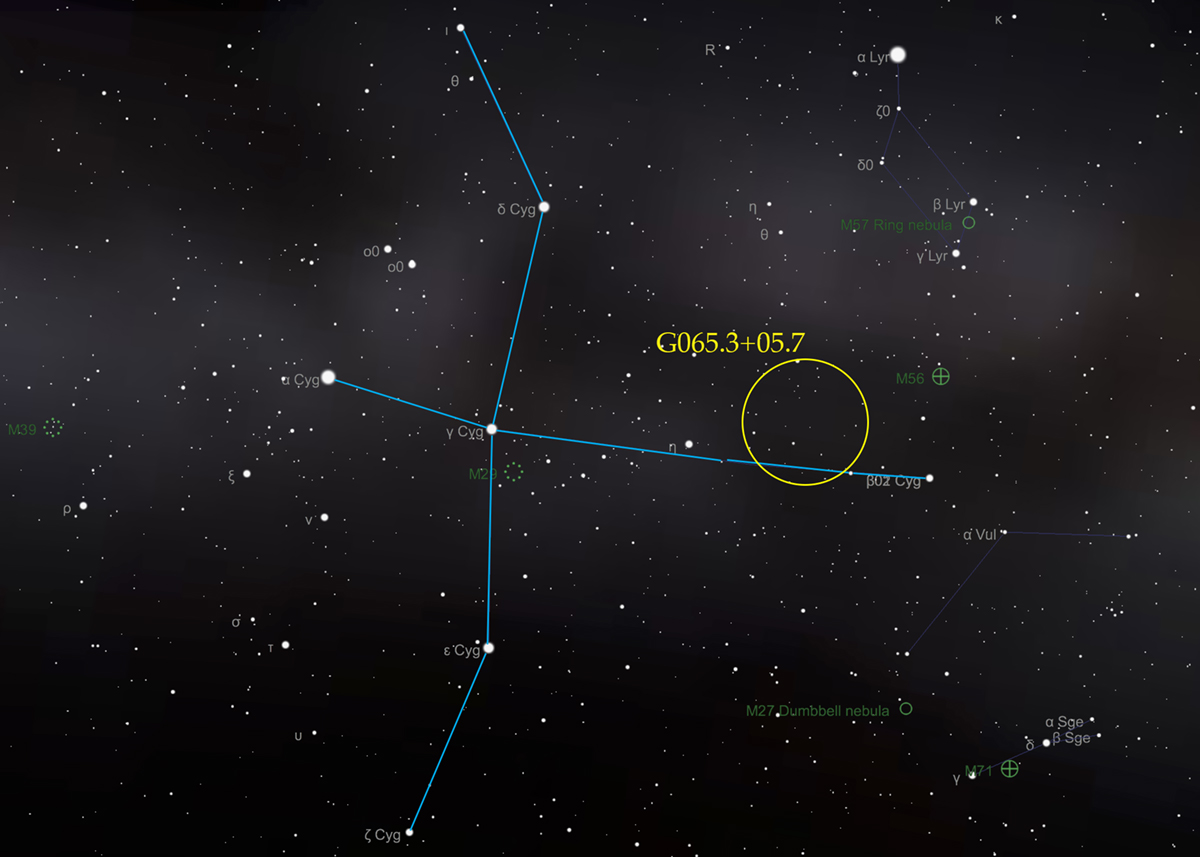Supernova Remnant SNR G065.3+05.7 | |||
| « Previous | Back to Supernova Remnant Gallery | Back to Astrophotography Gallery | » Next |
|
The 'Cygnus Supernova Remnant,' designated G065.3+05.7, is a rather large, but very faint, gaseous remnant of a supernova explosion. It is located along the spine of the constellation Cygnus the Swan. The image here is a 2-frame mosaic shot entirely with a narrowband H-alpha filter. The constellation Cygnus (below right) showing the location of the supernova remnant. | |||
|
A star (like our sun) is a gigantic sphere of mostly gaseous hydrogen and helium, large enough that its self-gravity creates enough temperature and pressure in the core to fuse hydrogen into helium. This nuclear fusion is the source of the energy and light that the star emits, but eventually all stars (and our sun) will run out of fuel, and what happens next is entirely dependent on the star's initial mass. Ironically, small less massive stars can last for trillions of years, while large, massive stars live "fast and furious lives," burning through their fuel supply relatively quickly, and may last only a few million years. Stars with initial masses greater than 8x the sun's have a violent end-of-life story. After exhausting the hydrogen fuel in their core, they expand into red giants, while their cores contract and heat up, eventually transitioning to fusing helium into carbon and oxygen in the core, while a shell of hydrogen surrounding the core continues to create helium and feed the core. After the helium is used up, these massive stars have enough gravity to achieve even higher temperatures and pressures in their core and successively fuse heavier elements still, eventually creating a nickel-iron core surrounded by shells of successively lighter elements. But iron is the end of the line, as fusing heavier elements requires the addition of energy, rather than liberating energy. Once central fusion ends for good, the core rapidly collapses (on the order of seconds!), heating up and then rebounding in a tremendous explosion that releases an amount of energy rivaling that of an entire galaxy--this explosion is called a Supernova. The remaining core collapses into either a neutron star, or if massive enough, into a black hole. Meanwhile, the outer envelope of the star is driven outward by the explosion at extremely high velocity, forming a (theoretically) spherical nebula of expanding gas and dust, creating shock fronts and heating both the expanding gas and the interstellar medium (ISM) into which it is expanding. The expanding shell is rich in metals and heavier elements, seeding the ISM with material for the next generation of stars. This expanding shell of gas and dust is a "Supernova Remnant (SNR)," eventually becoming light years across and glowing in the characteristic wavelenghts of emission nebula that can be photographed. | 
| ||

